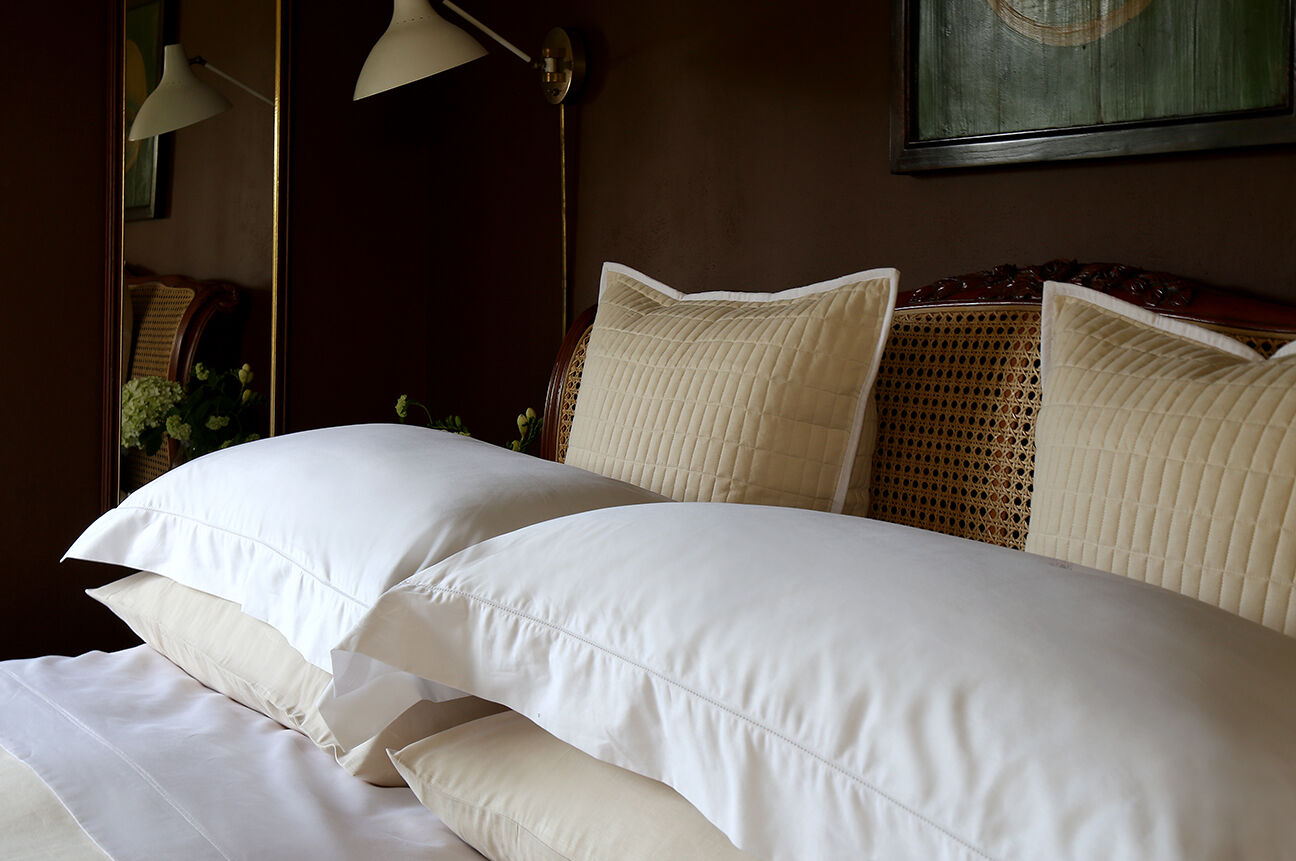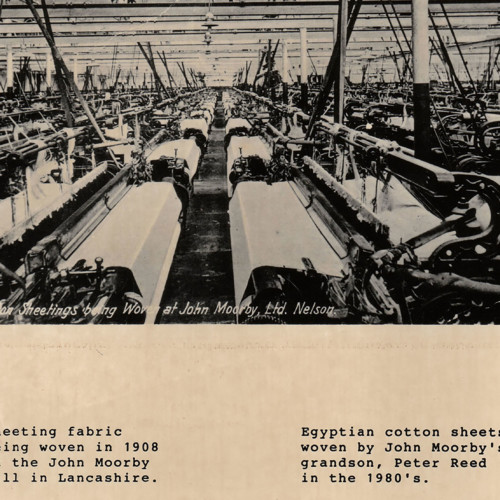It turns out that the surname Reed relates to a specific part of the loom and the weaving process called a “reed”. To many people the noun reed refers to the plant growing in shallow water where Moses was found, or the vibrating membrane in a clarinet or an oboe which produces their distinctive sound. But for myself who worked for pocket money sweeping the weaving shed in our family mill at Blacko in Lancashire aged 12, the word reed referred to only one thing. In the factory there was a whole room filled with “reeds” – all catalogued and stored on special shelves so that they remained rust free and didn’t bend. The “reed” was one of the most important parts of the loom and the cotton weaving process.
The longitudinal threads, called “warp” threads, pass through the loom from a weaver’s beam onto the final cloth roll, and the transverse threads, called “weft” threads, are enmeshed between the warp yarns by a shuttle once the healds separate them with a vertical shed. In real time the process moves quickly and it is hard to see how the cloth is produced, but the key part of the fabric manufacturing process is when each weft yarn is pressed into the “fell” of the cloth with the correct tension and pressure so that the weave of the fabric is tight and uniform. The picture below shows how this is achieved by using a comb like instrument which “beats up” once after every weft thread insertion to push the yarn into its correct position between the open warp threads. This piece of the loom is called the “reed”.
![]()
Originally all the warp threads had to be drawn manually through the eyes of the healds and the dents of the reed before weaving of a new cloth construction could begin. This was a time consuming and back breaking job performed by patient and often disabled men and women who spent hours crouched over a loom to tie and knot by hand up to ten thousand ends in a single warp. Their only tools were a reed hook to pull the threads through the reed, and chalk dust to keep their finger tips dry. You could always spot a “knotter” in the weaving shed by the white dust around his lips where he had moistened his fingers to tie the warp yarns.
Reeds were expensive to produce, essential to produce a given construction of cloth, and could not be substituted or replaced easily. So when a shuttle lifted off its race during the weaving process and damaged the surface of the reed, there was immediate downtime and the Mill Manager called quickly for a specialist “Reed man” to repair the loom.
Reed men were a bit like piano tuners. There were a rare breed who serviced several mills going for days at a time without work, but when the call came in the day or night, they had to respond quickly and work on the reed in the midst of other looms clacking all around them. Their tools of trade were a soldering iron (to melt the pitch tar), several pairs of pliers and dozens of metal spacers of varying thickness which were used to re-position the dents back into their original spacing – all of which were carried in a small leather suitcase with a short stepladder on his shoulder so that he could reach into the centre of the loom.
So that’s our story! We seem to be descendants of “Reed men” who were the piano tuners of the Lancashire weaving industry. This probably explains why our family heraldic crest which was granted by the College of Arms in London has two reed hooks in the shield, and shows a moorhen proudly carrying a reed hook in its clawed foot on the top of the crest.






